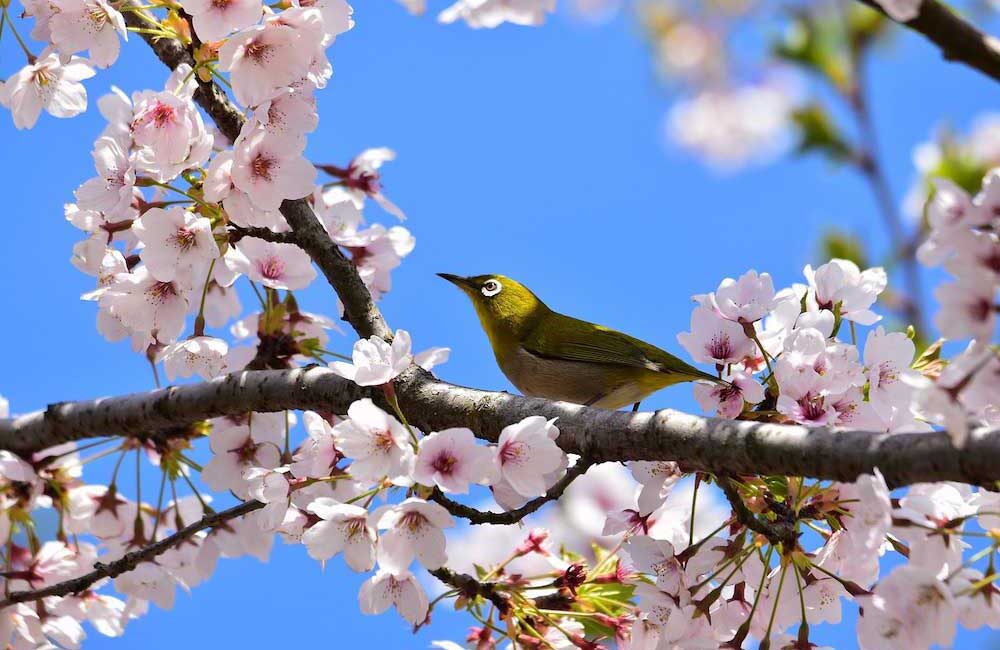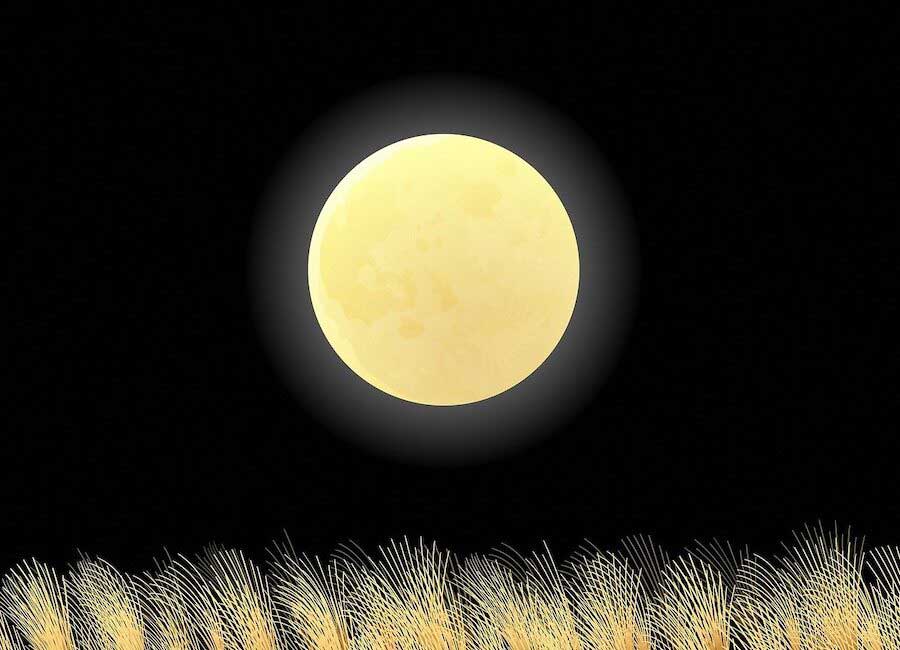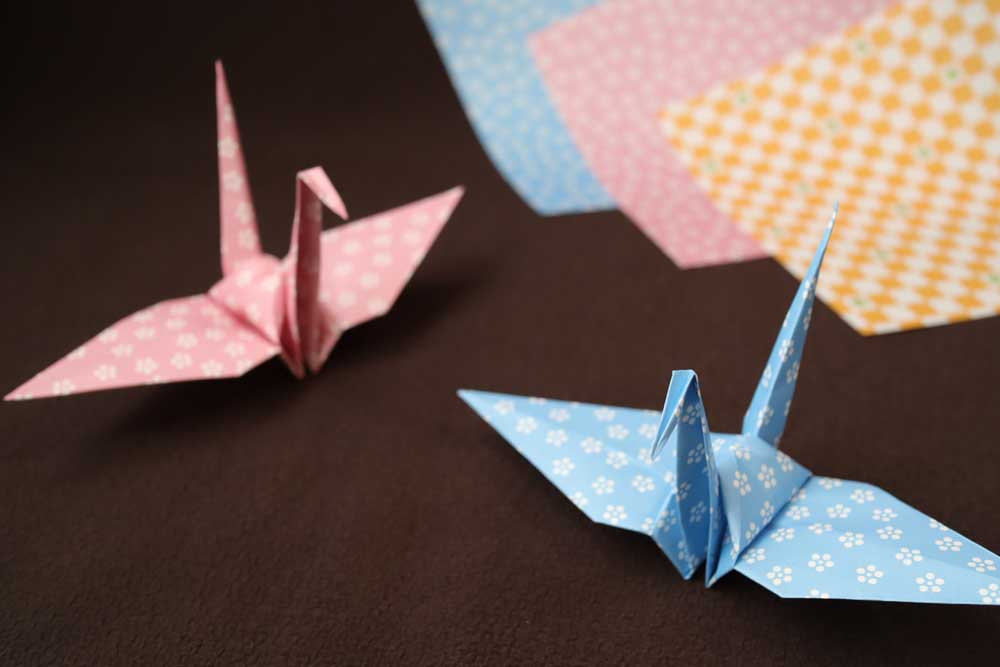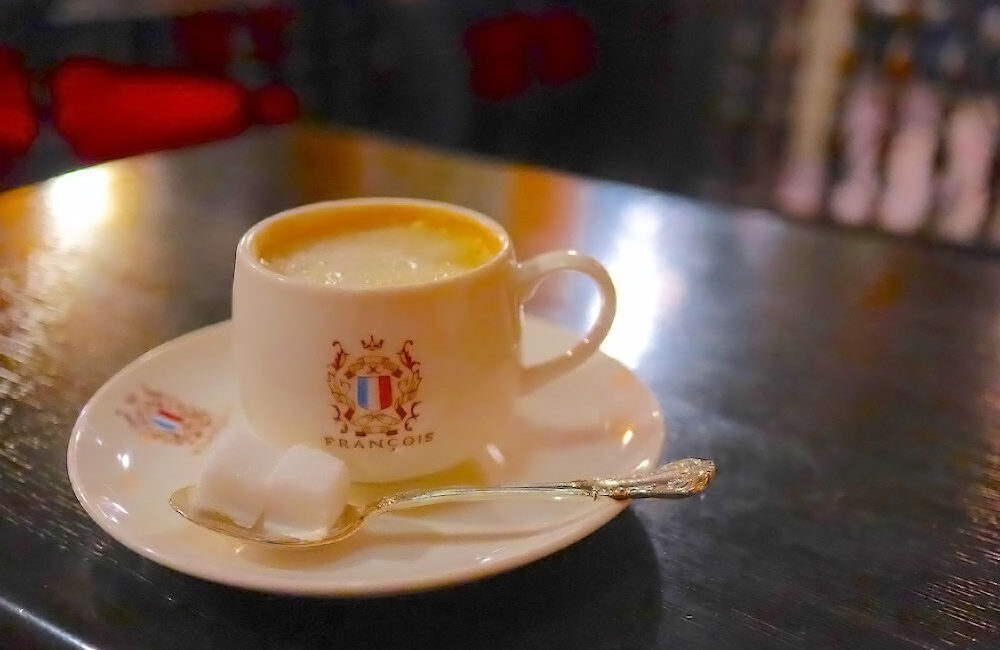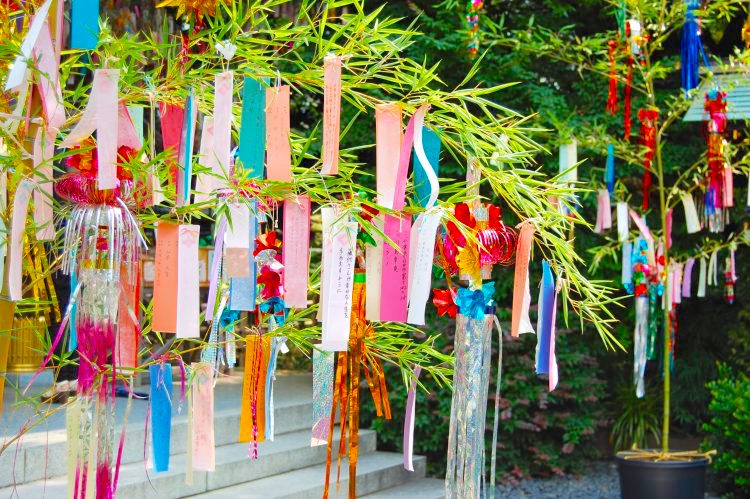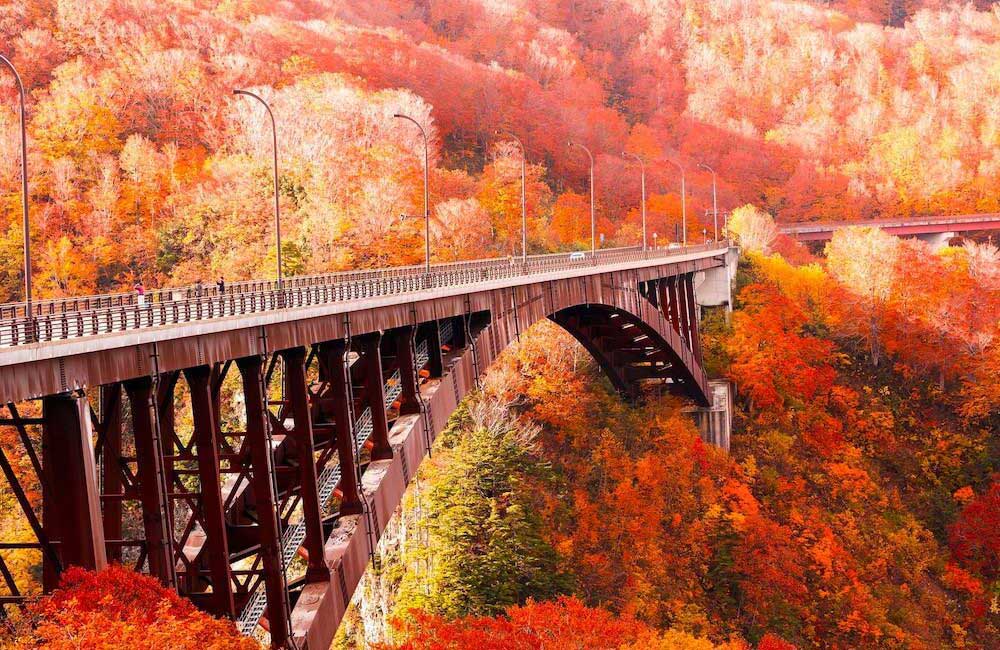
日本の秋を美しく彩る「紅葉」。
暑くてエネルギッシュな夏が終わり、気温が落ち着いてきて心地良く過ごせるようになってきたところに、食欲の秋、芸術の秋、読書の秋 . . . と、秋は何をするにも良い季節といわれています。
そして紅葉狩り以外にも、はっきりとした美しい四季に恵まれた日本には、「お花見」「お月見」などに見られるように、昔から自然を愛し崇拝してきた文化があります。
今回は、世界中の人々を惹きつけてやまない、「紅葉狩り」の魅力などを英語で説明する表現をご紹介します。
ご興味のある方は、当サイトで 英語クイズ(5000問) を出題しておりますので是非ご覧ください。
目次
紅葉狩りを英語で説明
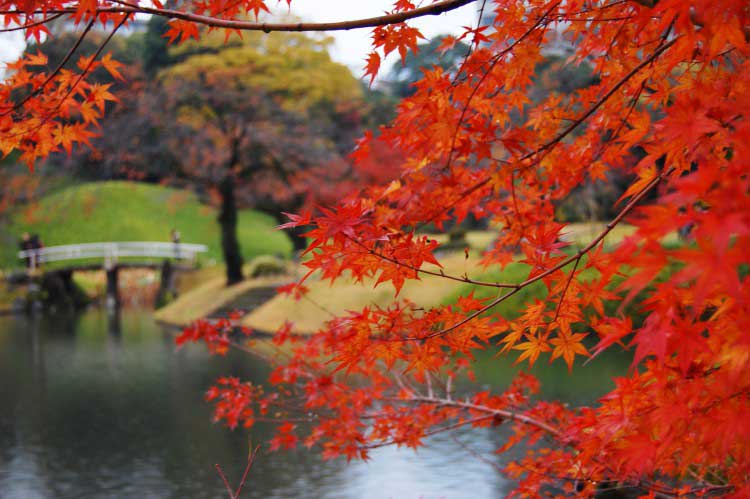
紅葉 / Kōyō
英語では「紅葉」にあたる言葉はありませんが、以下のように「秋の葉の色」や「葉の色が変わること」で紅葉を表現することができます。
「秋」は英語で fall または autumn ですが、fall はアメリカでよく使われます。
- fall/autumn leaves
- fall/autumn colors
- fall/autumn foliage
- red leaves
- autumnal leaf coloration
- leaves changing colors
foliage は集合的な「木の葉」「いっぱいの群葉」という意味です。
The leaves turn red/yellow.
(葉が赤色/黄色に染まる。→ 直訳:変わる)
Leaves change color in fall/autumn.
(秋になると葉の色が変わります。)
もう少し紅葉の素晴らしさを伝えるには、beautiful(美しい) や vivid(鮮やかな) などを使うと良いでしょう。
- vividly colored autumn leaves
- beautiful autumn leaves
- vivid autumn colors
- bright red autumn leaves
紅葉狩り / Momijigari
紅葉狩りには様々な言い方がありますが、view(意識的に見る)、admire(見惚れる、うっとりする)、appreciate(景色、芸術、食べ物などを楽しむ)などの動詞を使うと、「紅葉を愛でる」というニュアンスを豊かに表現できます。
- fall/autumn leaf viewing
- red leaf viewing
- viewing autumn leaves
- admiring the autumn leaves
- maple viewing
- tour of enjoying colorful autumn leaves
- leaf peeping
紅葉狩りの説明
Momijigari is a Japanese word that describes the pleasure of appreciating the beautiful fall leaves.
(紅葉狩りとは、秋の美しい紅葉を愛でる喜びを表す言葉です。)
Momiji refers to the maple tree.
(Momiji とはもみじのことです。)
Momiji is also called kōyō. Kōyō is another pronunciation of the characters for “momiji” which means “leaves changing colors” or “autumn leaves”.
(Momiji は kōyō とも言います。「こうよう」は「もみじ」のもうひとつの読み方で、紅葉を意味します。)
Spring and fall/autumn are the best seasons in Japan.
(日本のベストシーズンは春と秋です。)
I don’t recommend you come to Japan in summer. It’s too humid and hot.
(夏に日本に来ることはお勧めしません。蒸し暑すぎます。)
The autumn leaves in Japan are so beautiful.
(日本の紅葉はとても美しいです。)
In early October, the leaves of deciduous trees start to change color.
(10月初旬になると、落葉樹の葉が色づき始めます。)
As the autumn wind begins to blow, the green leaves of the mountains turn red and yellow.
(秋風が吹き始めると、山の青々とした葉が徐々に赤や黄色に変わります。)
Fall in Japan is when the whole island country gets colored in gorgeous red, yellow, and orange.
(日本の秋は、島国全体が非常に美しい赤、黄色、オレンジ色に染まります。)
Autumn colors start in Hokkaido and highlands and move gradually southward down the Japanese archipelago in the opposite direction of the advance of cherry blossoms in spring.
(紅葉は北海道や高地から始まり、春の桜とは逆に日本列島を徐々に南下していきます。)
This is called kōyō zensen (autumnal leaves front).
(これを紅葉前線と呼ばれます。)
The best time for autumn foliage in Japan is from mid-November to early December.
(日本の紅葉の見頃は、11月中旬から12月初旬です。)
Momijigari is a Japanese tradition of admiring the stunning shades of autumn leaves.
(紅葉狩りは、秋の素晴らしい紅葉の色合いを楽しむ風習です。)
Japanese people have appreciated the beauty of autumn foliage since ancient times.
(日本人は古くから紅葉の美しさを楽しんできました。)
During the season when the leaves turn a vivid color, people go out to see the changing leaves.
(木の葉が鮮やかに色づく時期は、人々は紅葉を見に出かけます。)
Momijigari is a popular activity for Japanese to visit scenic spots where leaves have turned red in fall.
(紅葉狩りは、秋に木の葉が赤く色づいた名勝を訪れる、日本人に人気のあるアクティヴィティです。)
In autumn leaf season, people go for a walk or travel to see the beautiful colored leaves.
(紅葉のシーズンになると、その美しさを求めて人々はお散歩や旅行に出かけます。)
When leaves of deciduous trees are colored vividly, many people travel around Japan to enjoy the beautiful scenery.
(落葉樹の葉が鮮やかに色づくと、多くの人が美しい景色を楽しむために日本中を旅して回ります。)
In Japan, the tradition of appreciating beautiful autumn leaves is as long and beloved as enjoying the blossoming cherry trees in spring.
(日本では、美しい紅葉を楽しむという伝統は、春のお花見と同じくらい長く愛されています。)
Activities like viewing autumn leaves or cherry blossoms in the spring are examples representing a nature-loving Japanese sense of beauty.
(秋の紅葉狩りや春のお花見のようなアクティヴィティは、自然の風景を愛する日本人の美意識の表れです。)
If you’re visiting Japan from mid-November to early December, I highly recommend you go see the fall leaves.
(もしも11月中旬から12月初旬に日本を訪れるのであれば、紅葉を見に行くことを強くお勧めします。)
I guarantee that admiring the fall colors will become a great memory of your trip.
(紅葉を楽しむことが、あなたの旅の素晴らしい思い出になることを保証します。)
One of the best things about traveling in Japan is enjoying the beauty of seasonal changes in nature.
(日本旅行の最も良いところのひとつは、移ろいゆく季節の美しさを楽しむことです。)
I love how the leaves change color in fall.
(私は、秋に葉の色が変わっていく様子が大好きです。)
日本の紅葉が美しい理由

「日本の紅葉は世界一美しい」といわれるのは一体何故なのでしょうか。
それは、日本には奇跡的に「落葉広葉樹」が多いことが挙げられます。
なぜ奇跡的なのかと申しますと、100万年前の氷河期において、日本独特の地形や地質、大気、そして海流などの大自然の偶然が複雑に絡み合い、落葉広葉樹の殆どが生き残ったからなのだそうです。
落葉広葉樹は、温帯でより寒さの厳しい地域に見られ、東アジアや一部のヨーロッパ、北アメリカやカナダなど、世界的にも限られた地域にしか存在していないため、秋に日本全国で紅葉を見られること自体が大変貴重なことなのです。
また、日本の紅葉は色彩やグラデーションが非常に豊かであることも知られていますが、この理由は落葉広葉樹の種類にあります。他国では13種類ですが、日本には何と26種類。
さらに、その年の気候によって葉の色や濃さも微妙に変わってきますので、同じ場所や風景であっても、毎年違った表情を楽しむことができるのも紅葉の魅力だと言えるでしょう。
カナダの紅葉がカナダの風景に映えるのと同じように、日本の紅葉は日本の風景に映えるからこそ、人々はこの珠玉の紅葉を求めて日本各地に足を運ぶのです。
Trees with leaves that change colors in fall are called deciduous trees and lose their leaves in winter.
(秋になると葉の色が変わる木を落葉樹と言い、これらは冬になると葉が落ちます。)
Examples of deciduous trees are the maple, buna (Japanese beech), and ginkgo (maidenhair tree).
(落葉樹の例としては、もみじ、ブナ、イチョウなどがあります。)
About two-thirds of Japan is covered in forests, and various deciduous trees can be found all over the country.
(日本は国土のおよそ3分の2が森林で、様々な落葉樹が至るところで見られます。)
The Japanese maple tree exists in many varieties whose colors vary from red to yellow and orange.
(日本のもみじには多くの種類があり、その色は赤から黄色やオレンジまで異なります。)
The difference in temperature between day and night in fall is very large, creating a perfect environment for beautiful colors of leaves.
(秋の昼夜の気温差が非常に大きく、美しい紅葉にぴったりの環境を生み出します。)
Evergreen trees like the pine tree, holly and cedar have the same color throughout the year and don’t lose their leaves.
(松、柊、杉などの常緑樹は、一年を通して同じ葉の色をしており、枯れることはありません。)
日本の紅葉の名所
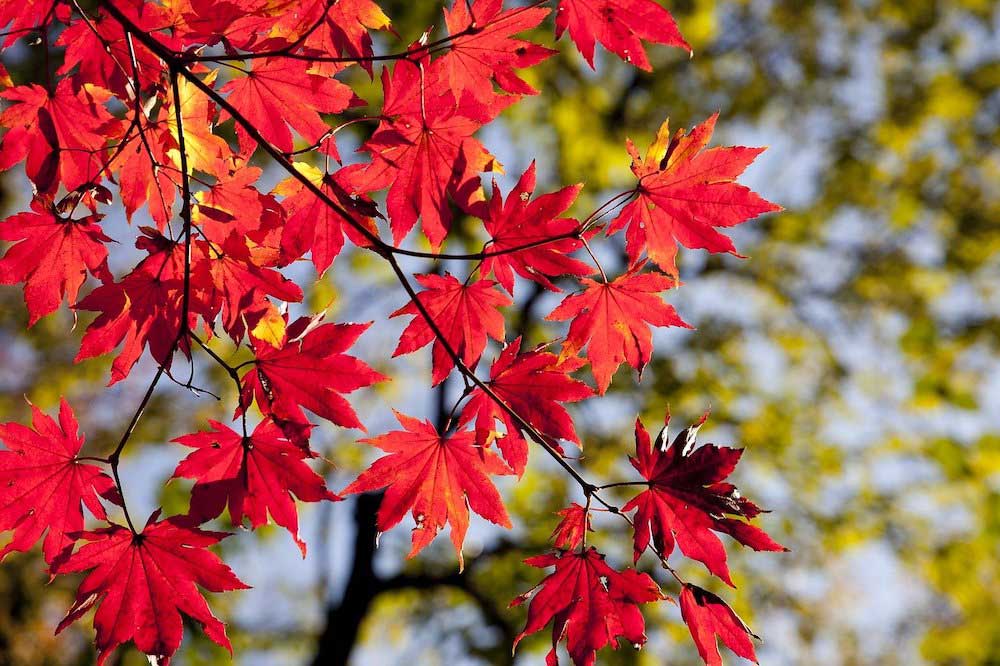
毎年紅葉の見頃の時期になりますと、例えば京都などは世界各国から多くの観光客が訪れるため、道という道が人で埋め尽くされる光景が海外のメディアでも話題になっています。
鮮やかに色づいた紅葉と、寺社仏閣や日本家屋などの「日本らしい」風景の美しいコントラストは、世界中の人々を魅了しています。
紅葉のベストシーズンは11月中旬から12月初旬といわれていますが、もちろん地域によって異なりますので、予定を立てる場合は例年の大体の見頃をチェックし、最新の紅葉情報と合わせて最適なタイミングでお出かけしましょう。
There are many famous spots for viewing autumn leaves throughout Japan.
(日本全国に、たくさんの紅葉の名所があります。)
The peak season for autumn leaves in Japan varies by region.
(紅葉のピークは、地域によって異なります。)
Meijijingū Gaien, Okutama, and Shōwa Memorial Park are famous spots for viewing these autumn leaves in the Tokyo area.
(明治神宮外苑、奥多摩、昭和記念公園などは東京界隈の有名な紅葉スポットです。)
In some parts of Japan, like Tokyo and Kyoto, the best maple viewing times typically range from November through early December.
(東京や京都など、日本の一部の地域では、紅葉の見頃は通常11月から12月初旬にかけてです。)
Kyoto is one of the most popular spots for viewing the autumn foliage.
(京都は、最も人気のある紅葉スポットのひとつです。)
In Kyoto, Arashiyama, Eikando and Tofukuji Temple are highly popular.
(京都では、嵐山、永観堂、東福寺などが大変人気です。)
At Arashiyama, you can get a magnificent view of the fall foliage at Hozukyo Gorge from a trolley train.
(嵐山では、トロッコ列車から保津峡の壮大な紅葉を眺めることができます。)
Many people can be seen visiting famous kōyō (autumn leaves) spots such as Oirase in the Tohoku region, Nikko and Kyoto.
(東北の奥入瀬、日光、京都などの紅葉スポットには多くの人々が訪れます。)
写真を撮ってもらうときの表現

観光地などで誰かに話しかけるときは、まず
- Excuse me. (すみません)
- Sorry to bother you. (お邪魔してすみません)
と声をかけるようにしましょう。
そして写真を撮ってもらいたい、何かを頼みたい場合は、以下の構文を使います。
「〜していただけますか」
・Could you please 〜 ?
・Would you mind 〜 ?
・Do you mind 〜?
「写真を撮っていただけますか」
・Could you please take a photo of me/us?
・Would you mind taking a photo of me/us?
・Do you mind taking our photo?
・Do you have time to take a photo of me/us? (直訳:写真を撮っていただける時間はありますか?)
※ Do you have “the” time と言ってしまうと、「今何時ですか?」になってしまいますのでご注意ください。
Could you please take my picture with ●● in the background?
(●●を背景に写真を撮っていただけますか。)
Sorry, could you take another one, please?
(すみません、もう一枚撮っていただけますか。)
Please take it sideways.
(横向きで撮ってください。)
最後に
いかがでしたでしょうか。
様々な奇跡が重なってできた、日本が世界に誇る美しい紅葉。
皆さんも、秋に海外のお友達をおもてなしすることがありましたら、是非一緒に各地の紅葉を楽しんでくださいね。
